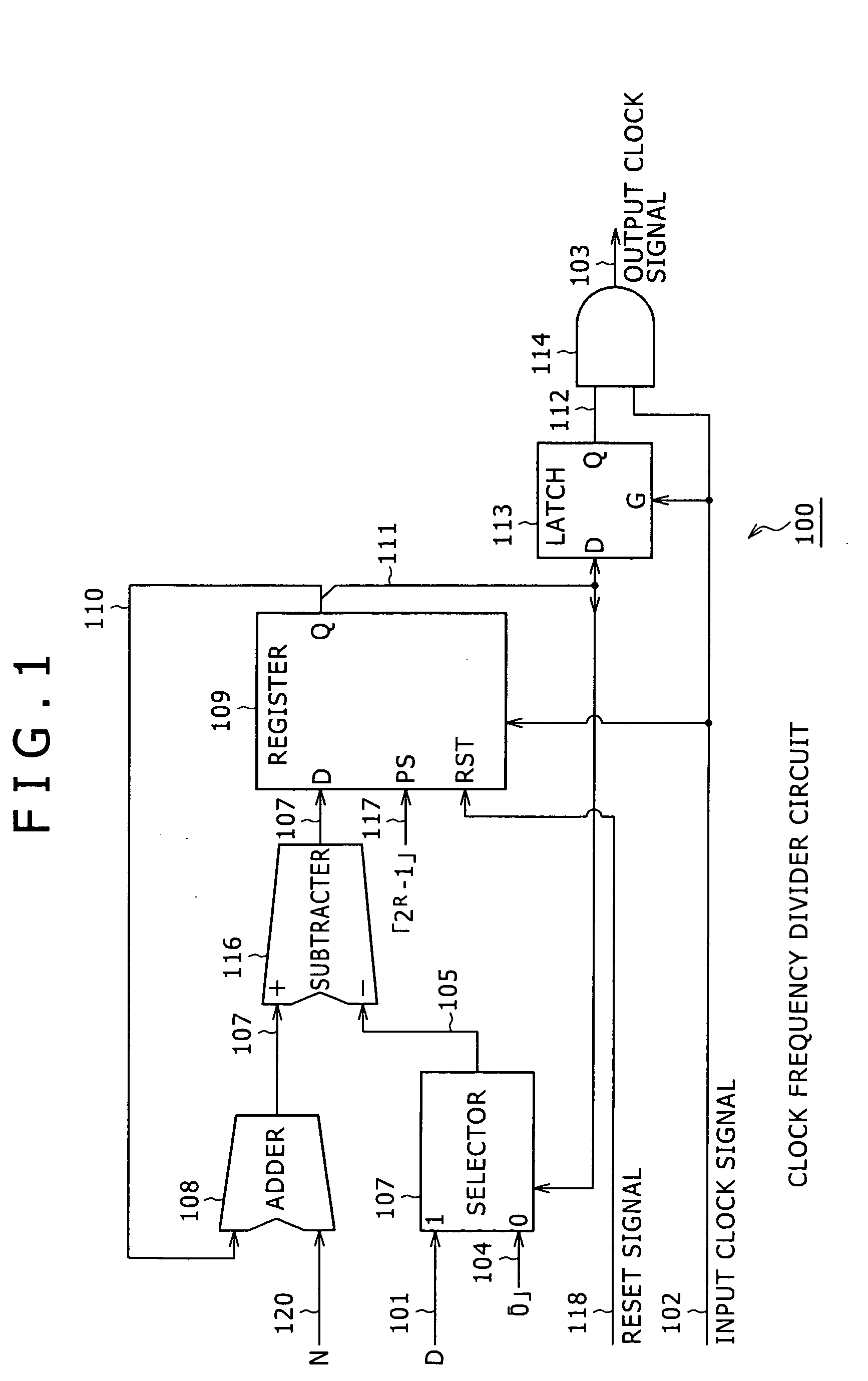Clock frequency divider circuit
- Summary
- Abstract
- Description
- Claims
- Application Information
AI Technical Summary
Benefits of technology
Problems solved by technology
Method used
Image
Examples
first embodiment
[0024]FIG. 1 is a diagram showing an example of configuration of a clock frequency divider circuit 100 according to the present invention. This clock frequency divider circuit 100 subjects an input clock signal 102 to N / D frequency division, where N is a numerator setting value of a frequency dividing ratio (N / D), and D is a denominator setting value of the frequency dividing ratio. However, it is assumed that the numerator setting value N and the denominator setting value D of the frequency dividing ratio are each an arbitrary natural number, and each satisfy a condition (N≦D) and a condition (D!=0).
[0025] The clock frequency divider circuit 100 includes a selector 107, an adder 108, a subtracter 116, a register 109, a latch 113, and a logical product circuit 114.
[0026] The selector 107 is supplied with an input signal 101 corresponding to the denominator setting value D of the frequency dividing ratio, an input signal 104 corresponding to a value “0,” and an output signal 111 cor...
second embodiment
[0098] The operation of the clock frequency divider circuit 200 according to the present invention will next be described concretely with reference to FIG. 3 and FIG. 4. FIG. 4 is a timing chart showing operation when it is assumed that N=3 and D=5 and N / D (=3 / 5) frequency division is performed in the clock frequency divider circuit 200 of FIG. 3. Suppose in the following that a period from a rising edge of the input clock signal 202 to a next rising edge of the input clock signal 202 is one cycle, and that cycles are described as T1, T2, T3, . . . . In this case, from the above Equation (1), R is 3 (=ceil(log(5) / log(2)).
[0099] First, when the reset signal 218 is set to a high level, an initial value “7” (=2R−1) is set in the register 209 by the input signal 217. In this case, from the above Equation (1), R is 3.
[0100] Next, in cycle T1 from a rising edge of the input clock signal 202 to a next rising edge of the input clock signal 202, the register 209 outputs the register output ...
PUM
 Login to View More
Login to View More Abstract
Description
Claims
Application Information
 Login to View More
Login to View More - R&D Engineer
- R&D Manager
- IP Professional
- Industry Leading Data Capabilities
- Powerful AI technology
- Patent DNA Extraction
Browse by: Latest US Patents, China's latest patents, Technical Efficacy Thesaurus, Application Domain, Technology Topic, Popular Technical Reports.
© 2024 PatSnap. All rights reserved.Legal|Privacy policy|Modern Slavery Act Transparency Statement|Sitemap|About US| Contact US: help@patsnap.com










